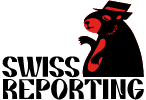Now Reading: Swiss Franc Reaches New Highs Amid Global Economic Uncertainty
-
01
Swiss Franc Reaches New Highs Amid Global Economic Uncertainty
Swiss Franc Reaches New Highs Amid Global Economic Uncertainty

Swiss Franc Reaches New Highs Amid Global Economic Uncertainty
Background
The Swiss franc (CHF) has long been seen as a safe-haven currency, attracting investors during periods of global turmoil. Traditionally, Switzerland’s political neutrality, stable economy, and robust banking sector have made the franc a preferred asset in uncertain times. The last decade has seen repeated surges in the EUR/CHF and USD/CHF exchange rates in response to various crises.
What is happening now
In the past 24 hours, the Swiss franc has reached its strongest level against the euro in over two years, as well as new highs against the US dollar. This steep appreciation is primarily driven by risk-averse investors reacting to recent instability in global financial markets, geopolitical tensions, and concerns about inflation. Central banks worldwide are under pressure as a result, with the Swiss National Bank (SNB) closely monitoring the currency’s rapid movements.
- CHF/EUR and CHF/USD rates at multi-year highs
- Increased global market volatility
- Rising safe-haven demand
Impact on Switzerland
The strong franc poses a double-edged sword for Switzerland’s economy. While it underlines international confidence in the country, it also makes Swiss exports more expensive, potentially hurting manufacturers and reducing the competitiveness of the tourism sector. Conversely, consumers may benefit from cheaper imports. The SNB faces a delicate task balancing the interests of exporters with the need to avoid inflation and maintain stability.
What happens next
Economists expect volatility to persist, particularly if global uncertainties intensify. The Swiss National Bank could intervene verbally or directly in the markets if the franc rises further, although such steps are being considered cautiously. Businesses and investors will be watching central bank statements closely for guidance. For now, Switzerland’s safe-haven status appears stronger than ever, but the situation remains dynamic and subject to rapid change.


















